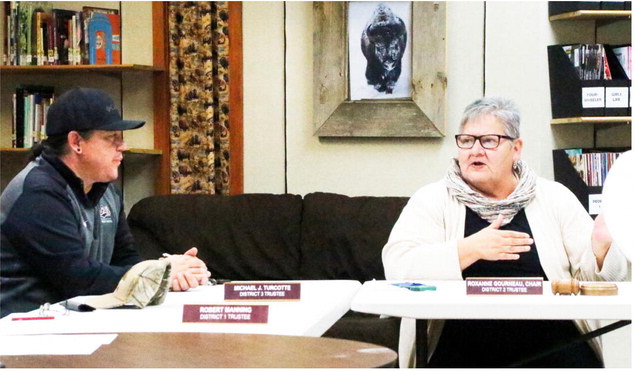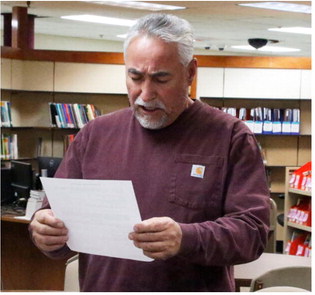Montana DPHHS Should Give Local Businesses Preference
A couple of lawmakers aren’t so sure — at least yet — that a “sea change” isn’t taking place when it comes to how the Department of Public Health and Human Services is awarding contracts.
Last week, a Democrat from Bozeman asked DPHHS if a recent award to an out-ofstate company for providing support to child care facilities represented a new trend, but director Charlie Brereton said it did not.
A presentation from DPHHS to a legislative budget committee listed the provider contract at $3 million. The health department earlier said the award is going to Shine Early Learning of New York, or Acelero.
Montana organizations will lose a significant number of employees or even close as a result of the change in the way DPHHS broke out recent contracts for child care related services.
It means, in part, that one New York company will provide services that seven regional organizations used to provide. It means just a couple of Montana businesses will stretch to try to provide support to families, including for the Best Beginnings scholarship, to the entire state.
Earlier this year, a different change meant Maximums, a company based in Virginia, was awarded $15 million to do business in Montana. At least a couple of nonprofit employee-training agencies in Montana closed as a result, according to earlier reporting from the Daily Montanan.
At the time, DPHHS said having one provider as opposed to multiple contracts streamlines the client’s experience, and virtual options give people more choices.
The Department of Public Health and Human Services didn’t answer a question last week about whether other proposals are in the works that could replace more Montana businesses with outside companies.
Although Brereton last week disputed the idea a “sea change” was underway, a couple of legislators with expertise in child and family issues said this week they still have questions about whether the new contracts mean a new way of doing business.
Rep. Jennifer Carlson, a Republican from Manhattan, said given the fact that at least one business that’s been around for decades is considering closure means the change in Montana is significant.
“The department says, ‘No, it’s not.’ And I disagree, frankly,” she said.
Child Care Connections in Bozeman has 16 staff, and it’s in limbo; 4 C’s in Butte will lose eight to 10 of its 18 workers as a result of the changes, the directors said earlier.
Carlson said she would like the state to give Montana companies preference with contracts, in part because it’s money coming from the state — even if it’s federal — and could go to Montana organizations, which employ people who have jobs and spend their dollars here.
“There is an opportunity to give a preferential score to a Montana business, and I know that they did not do that,” Carlson said.
She also said Montana is a long way from the East Coast — “We’re not New York West” — and the company doesn’t have a footprint here.
“They might be able to do it better, and they might be able to do it cheaper,” she said. “But I don’t think they’re going to be able to do it better and cheaper from 3,000 miles away.”
DPHHS earlier said the New York company plans to hire some workers in Montana to help child care facilities. However, it’s fewer than the number currently supporting child care facilities.
Carlson also said she hadn’t heard complaints that the Montana businesses were doing a poor job or overspending or anything else: “So I’m not sure what problem we were trying to fix.”
The health department has argued the change will improve services to Montanans, and a “pay for performance” model means incentives to open more child care slots and retain child care businesses.
Carlson agreed it’s good to save money, but she said other factors are important too.
“Accessibility should be the No. 1 requirement,” she said. “If you’re going to provide a service, it needs to be accessible.”
Sen. Chris Pope, a Democrat from Bozeman, asked the question last week about whether the new contracts represented a “sea change.”
He said this week he trusts the director’s word, and at the same time, legislators have said more data from DPHHS would be helpful. For instance, he said he would like a report with the number of contracts assigned to outof-state companies. “The department is very good and capable of producing good data about their programming. And this is a glaring omission,” Pope said.
He also said having a bird’s eye view of strategy and direction would help. Are there new rules that make the contracts unavailable to Montanans? And how will rural communities fare with the changes?
“The initiative is to find out why our local providers are being told their services are no longer necessary, and in some cases, they’re having to close their doors or completely restructure their business plan after being very valuable contributors to the health of Montanans for decades,” Pope said.
Since the legislature is the body that funds the efforts, he said, lawmakers need to understand why the state may be taking a different path when it comes to delivery systems and goals for efficiency and affordability.
He said having more information from DPHHS would help citizens understand too.
“The question of the day is why would a very competent Department of Public Health and Human Services elect not to be a little more forthcoming on some of the details about how these contracts have been rewritten and redesigned as such that we’re starting to lose some of our legacy providers?” Pope said.
(He also said he has no information to suggest that Shine or Maximus or any other new company DPHHS may be working with doesn’t have the capability to do the work.)
“The fact that this is not a sea change doesn’t really pass the smell test yet,” he said.

